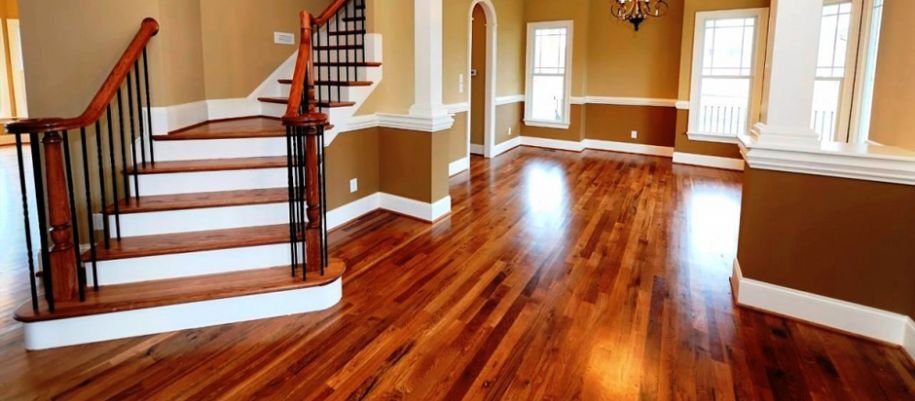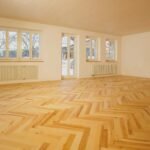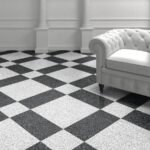Floor sanding is an important service that can keep your floor looking good at all…
Floor Sanding vs. Refinishing: Decoding the Key Differences
When it comes to maintaining and enhancing the appearance of your floors, understanding the differences between floor sanding and refinishing is crucial. Both processes play a significant role in revitalising the beauty of your wooden floors.
In this detailed guide, we will explore the nuances of Affordable floor sanding in Melbourne and refinishing, providing insights into their definitions, techniques, influencing factors, cost comparisons, and professional insights.
Key Differences Between Floor Sanding and Refinishing
1. Definition of Floor Sanding
Floor sanding is removing the top layer of wood from your floor to reveal a fresh, smooth surface. This process involves using specialised sanding equipment to eliminate imperfections, scratches, and wear, ultimately restoring the natural beauty of the wood. The outcome of floor sanding is a rejuvenated, even surface that can be left natural or refinished with a protective coating.
The process of floor sanding brings numerous benefits, including the restoration of the wood’s original texture and colour, the removal of surface imperfections, and the creation of a clean canvas for new finishes. Additionally, Affordable floor sanding in Melbourne allows for the removal of stains, scratches, and dents, providing a fresh start for your wooden floors.
2. Definition of Refinishing
Conversely, refinishing involves applying a new coat or finish over the existing wood floor. This process is ideal for maintaining the integrity and appearance of the floor without completely removing the top layer of wood. Refinishing offers the opportunity to change the colour of the wood, enhance its durability, and protect it from future wear and tear.
The benefits of refinishing include the ability to customise the floor’s appearance with various finishes, such as matte, satin, or glossy. It also provides a protective layer that can prolong the life of the wood and make it more resistant to daily use and foot traffic.
3. Techniques Used in Floor Sanding
Floor sanding requires specialised sanding equipment, such as belt sanders, orbital sanders, and edgers, to effectively remove the top layer of the wood. The process involves multiple stages of sanding, starting with coarse-grit sandpaper to remove the existing finish and progressing to finer grits for a smooth surface. Professional expertise is crucial in Affordable floor sanding in Melbourne to ensure even sanding, preserving the wood’s thickness, and avoiding over-sanding.
The role of professional expertise in floor sanding cannot be overstated, as it directly impacts the quality of the outcome. Professional floor sanding services employ skilled technicians who understand the complexities of different wood types, the intricacies of sanding equipment, and the nuances of achieving a flawless finish.
4. Techniques Used in Refinishing
Refinishing involves the application of new finishes, such as polyurethane, water-based, or oil-based sealants, to the existing wood floor. Before the application, the floor is thoroughly cleaned, and any imperfections are addressed to ensure a smooth and even surface. The choice of finish and protective coatings depends on the desired appearance, level of durability, and maintenance preferences.
Professional expertise is essential in the refinishing process to ensure proper application, even coverage, and the selection of the most suitable finishes for the specific wood type and environment. Experienced professionals understand the nuances of different finishes, the drying and curing processes, and the importance of environmental factors in achieving a durable and attractive finish.
Factors Influencing Choice Between Floor Sanding and Refinishing

1. Condition of the Floor
The condition and age of the floor are pivotal factors in determining whether floor sanding or refinishing is the most suitable option. Floor sanding is ideal for floors with deep scratches, extensive wear, or uneven surfaces that require the removal of the top layer to restore the natural beauty of the wood. On the other hand, refinishing is a preferred choice for floors with minor imperfections, where a new finish can effectively enhance the appearance and durability without the need for extensive sanding.
Assessing the condition of the floor involves examining the depth and severity of imperfections, the thickness of the wood, and the presence of structural issues. Professional assessment and consultation can provide valuable insights into the most suitable approach for revitalising your specific floor.
2. Desired Outcome
The specific goals for the floor, such as restoration, colour change, or enhanced durability, heavily influence the choice between floor sanding and refinishing. If the goal is to restore the original beauty of the wood, address deep imperfections, or change the colour of the floor, floor sanding may be the preferred option. Conversely, if the primary goal is to protect the floor, customise its appearance, or address minor imperfections, refinishing with a new coat or finish is a more suitable choice.
Examples of specific scenarios where one method may be preferred over the other include historic wood floors requiring restoration, floors with minor imperfections needing a refreshed appearance, or floors with extensive wear demanding complete rejuvenation.
3. Cost Comparison
The cost factors associated with floor sanding and refinishing encompass various elements, including the extent of the work, the condition of the floor, the choice of finishes, and the need for professional services. While floor sanding may involve higher initial costs due to the labour-intensive process and equipment requirements, refinishing can also incur significant expenses based on the quality of finishes, protective coatings, and professional expertise.
Considering the long-term cost-effectiveness, floor sanding may offer durability and longevity by addressing underlying imperfections and providing a fresh start for the wood. Refinishing, conversely, can be a cost-effective solution for maintaining and protecting the floor without the need for extensive sanding and removal of wood layers.
4. Professional Insights
Seeking expert opinions from professionals in the flooring industry is invaluable for determining the best method suited for specific flooring situations. Flooring professionals possess extensive knowledge and experience in assessing the condition of floors, recommending suitable techniques, and executing processes with precision.
Their recommendations are based on thorough evaluations of the floors, considering factors such as wood type, age, structural integrity, and the property owner’s goals. Professional insights also encompass guidance on selecting finishes, protective coatings, and maintenance practices to ensure the longevity and beauty of the wood floors.
Conclusion
In conclusion, the key differences between Affordable floor sanding in Melbourne and refinishing encompass their definitions, techniques, influencing factors, cost comparison, and professional insights. Understanding these differences is essential for making informed decisions that align with the specific needs of your wooden floors. Whether it’s rejuvenating the natural beauty of the wood through floor sanding or enhancing its appearance and durability through refinishing, both processes play a crucial role in maintaining and elevating the aesthetics of your living or working spaces.













